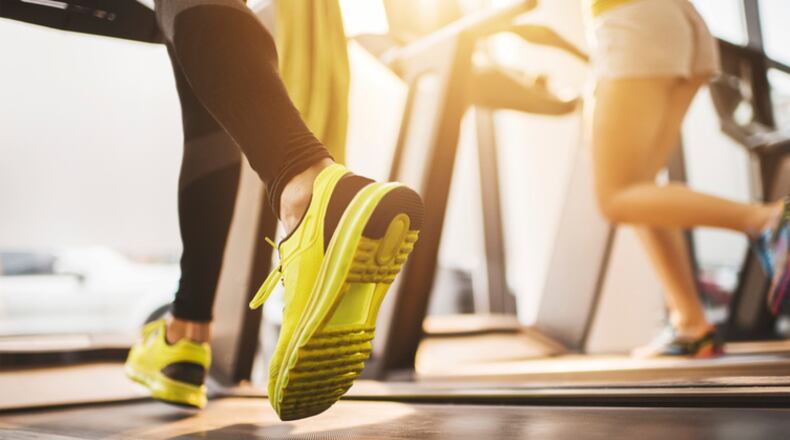Pretty much every gym worth its salt has at least one treadmill, but how can runners hitting the belt stay motivated? Bri Sexton, a certified personal trainer and the fitness director and head trainer at Atlanta's BLAST, is sharing the best running workouts for the treadmill to avoid turning exercise into what she jokingly refers to as the "dreadmill."
>> RELATED: 7 questions you were too afraid to ask about running
Incline walking
This basic exercise is an option for even the treadmill novice.
"Find the incline buttons on your treadmill, and break them in! Start with a moderate nine percent," said Sexton. "Progress to alternating between nine percent and anything at or above 15 percent at a slower pace to increase overall cardiovascular and muscle intensity."
For such a straightforward instruction, this treadmill workout packs a punch.
"Taking your treadmill routine to the next level increases the activation of muscle tissue in your legs and requires more effort output by your aerobic and anaerobic systems," said Sexton. "Bottom line: you get cardio and leg/butt toning simultaneously."
Be sure to keep an eye on form when engaging in this particular exercise.
"Keep a tall posture that is one straight line, slightly leaning forward from your ankles to your crown," said Sexton. "Try to let your arms swing naturally, keep your knees soft and land with a gentle mid-foot strike on the belt. Protect your lower back by not letting your chest lead, or hunkering down low in your legs."
High intensity interval training (HIIT) sprints
Short on time but willing to work? Try a HIIT routine to maximize time spent on the treadmill.
"Sprint intervals are extremely time efficient, have a higher post-exercise "burn" association, and can boost your mood by increasing beta-endorphin levels more than moderate-intensity endurance exercise," said Sexton. "HIIT is also widely proven to be more effective than moderate-intensity endurance training, improving blood vessel function and health."
To reap these benefits, rotate between 20 to 60 seconds of "all-out speed" followed by 20 to 60 seconds of rest, or go for something more intense.
"Try the classic Tabata-style intervals of 20 seconds at a minimum of 90 percent possible effort, followed by 10 seconds total rest for eight rounds, or four minutes," she said, suggesting runners do this four times for a total workout time of 16 minutes. "Trust me, if you are doing it at true 90 percent effort output, you will struggle to complete four sets."
But what muscles are benefitting from this routine?
"Sprinting requires power, and that involves your entire body," said Sexton. "You use your calves during plantar flexion as you push off. Your hamstrings provide hip extension and knee flexion. Your quadriceps provide power by hip flexion and knee extension, and your glutes help rotate and extend your thighs."
And it's not just the lower body.
"Of course you use your abdominal muscles for balance and you are pumping your arms, too," said Sexton, noting that the cardiovascular system is at work to top it all off. She notes that higher intensity workouts always come with a greater risk for injury, and suggests that runners engaging in HIIT sprints prepare themselves.
"Start with five to eight minute warm-up consisting of dynamic body movements at a moderate pace to increase body temperature and mobility. You may also need to build up to more sets of work and higher paces."
Incline lunges
Sexton said those looking to lunge should set the treadmill to the highest incline possible — usually 15 percent — and set the speed to approximately 1.5 mile per hour. The slow pace, she said, allows the runner to focus on form and muscle engagement.
"You are using your quads to step and sink into the move, driving upwards with your glutes and hamstrings, and relying on your abs to hold yourself upright and keep it all balanced," explained Sexton. "You get great lower half toning while still keeping your heart rate elevated at a consistent pace. Bigger muscles require more energy to move, so you will be panting in no time."
This is another exercise that requires good posture to ensure optimum safety.
"Hold on to the rail or handlebars to help keep your torso upright," said Sexton. Engage your abs and bend the back knee directly down below your center of gravity: think of two 90 degree angles, one in each knee, at the bottom of this move. Drive up strong through the front glute and keep the movement fluid to avoid locking out knees."
About the Author
Keep Reading
The Latest
Featured



